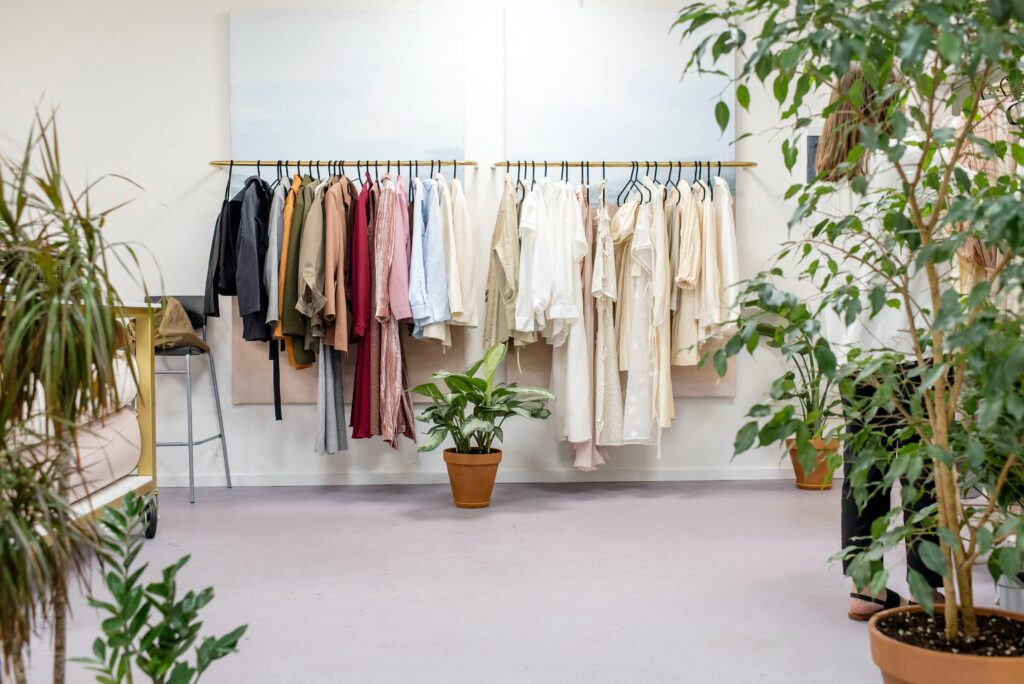Maintaining Style with a Greener Wardrobe

When we envision sustainable fashion, the image of models strutting down runways draped in colossal plastics might spring to mind. However, the reality runs deeper: our beloved fashion industry stands as a formidable environmental adversary. Behind its glamour lies stark evidence of depleted lands due to cotton farming, rivers tainted by dye runoff, and vast mounds of discarded clothing, casualties of fleeting trends.
Sustainable fashion goes beyond trends, urging responsible practices with mindful materials and ethical production. It’s not just a style choice; it’s an urgent need to combat environmental harm and exploitation, fostering a fairer, balanced future for everyone.
The traditional fashion industry’s modus operandi involves rapid clothing turnover, driving colossal textile waste, and perpetuating exploitative labor conditions, all while draining excessive water and energy. In contrast, sustainable fashion operates on foundational principles that redefine the clothing lifecycle. It champions designs, production methods, distribution channels, and usage patterns prioritizing environmental friendliness, social responsibility, and ethical consciousness.
These principles take shape across the sustainable fashion landscape through ethical sourcing practices, the embrace of eco-friendly materials, and a steadfast commitment to fair labor practices across the supply chain.
However, certain aspects of the fashion industry may lie beyond our control as consumers, but there are impactful steps we can take as individuals:
- Embrace a Capsule Wardrobe: Curating a collection of essential, versatile pieces encourages mindful consumption, minimizing the need for frequent purchases while ensuring a stylish, functional wardrobe.
- Opt for Pre-Loved Items: Explore thrift stores or online platforms for unique, budget-friendly finds. Embracing second-hand fashion not only reduces waste but also offers distinct pieces that align with personal style.
- Repair, Repurpose, Upcycle: Engage in activities that breathe new life into old garments. Repairing or repurposing clothes fosters a deeper connection to our wardrobe, promoting creativity while extending clothing lifespan.
- Eco-Friendly Care: Adopt sustainable laundering practices and proper storage techniques to contribute to a more sustainable fashion cycle.

It falls upon us to be stewards of the environment, yet it can seem challenging to uphold sustainability while staying fashionable. However, with conscious choices, we can do both:
- Timeless Classics: Opt for wardrobe staples that stand the test of trends. Classic pieces like a crisp white shirt, a well-tailored blazer, or the ever-reliable little black dress remain eternally chic, and adaptable for various occasions.
- Quality and Durability: Choose high-quality garments crafted from durable materials. These pieces not only last longer but also endure daily wear, minimizing the need for constant replacements.
- Versatile Styling: Seek clothing items that offer versatility. Pieces that can be styled in multiple ways bring value to your wardrobe, allowing for endless combinations without compromising on style.
- Tailored Fit: Ensure your clothes fit impeccably. Tailored or well-fitted garments instantly elevate any look, adding sophistication and a touch of personal style. Consider alterations rather than immediately opting for new purchases to achieve the perfect fit.
- Timeless Neutrals: Incorporate timeless neutral hues like black, white, navy, beige, and gray. These shades serve as a versatile foundation, effortlessly complementing other colors and ensuring a consistently stylish appearance.
In the realm of fashion, sustainability is not merely a trend but a transformative journey toward responsible consumption. By embracing mindful practices—curating capsule wardrobes, valuing pre-loved items, and engaging in creative garment care—we craft wardrobes that echo elegance, durability, and versatility. These choices not only elevate personal style but also herald a conscious commitment to reduce our environmental footprint. Through these actions, fashion becomes a platform where elegance meets ethics, paving the way for a more sustainable and stylish future for all.
-Chavi Agrawal, an enthusiastic literature student, embraces the art of writing. She aspires to author her own book in the future.








